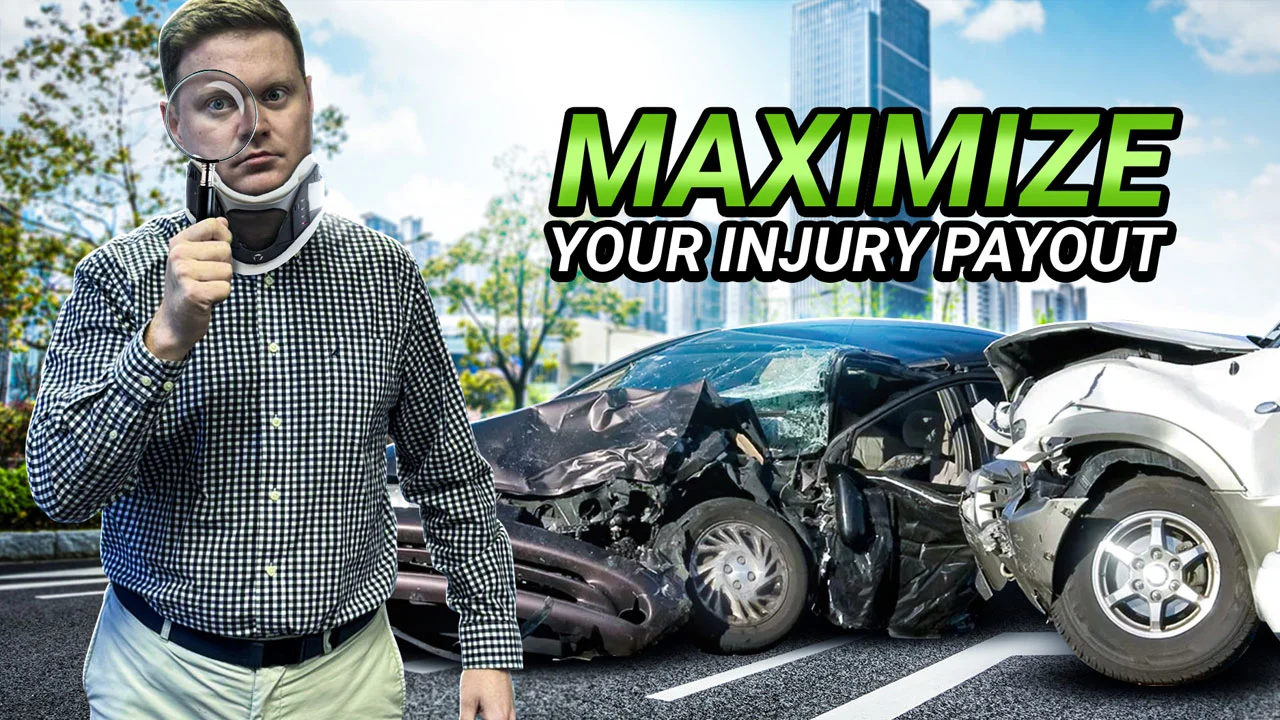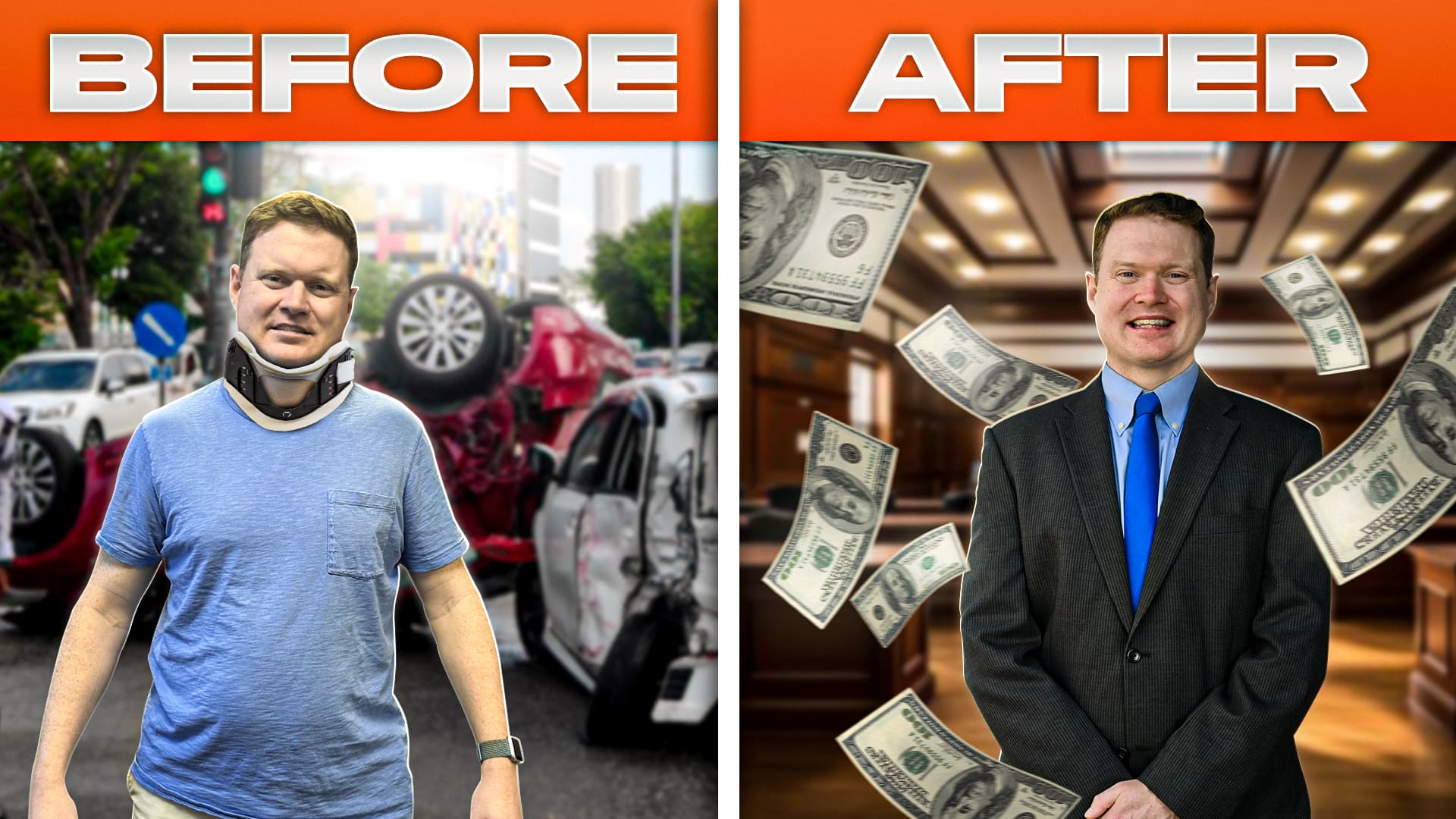Significant Injuries and Liability
You must have bad injuries to have an injury case worth a significant amount of money. You must also prove liability against another party to have a big injury case. Injuries and liability against another party alone, however, are not enough to have an injury case with a big payout.
A Client’s Story
Let me tell you a story about one of my past clients. I think about this client all the time. Most times, attorneys, including myself, like to talk about our big wins. But with this client, I consider it one of the biggest losses of my career, even though I was able to get her the insurance policy limits.
The Accident
You see, this client, was almost 40 years old when she was involved in a significant motorcycle accident. An unlicensed 16-year-old minor had run a stop sign while driving an automobile. My client was a passenger on a motorcycle when they were struck by the young driver. My client was thrown from the motorcycle. As you can imagine, she suffered significant injuries.
Initial Consultation
She called me weeks after her accident, and she was lost as to what to do next. I remember the day she came to my office. She was in a wheelchair. Her son about 18 years of age wheeled her into my office. On that day at my office, I remember thinking that this was the exact type of client that led me to begin my career as a personal injury attorney. It was so terrible what happened to her, and I wanted to go to war for her to get every single dime I possibly could for her.
Immediate Action
After she left my office, I immediately got in touch with the insurance adjuster for the at-fault driver in her case. I would typically gather my client’s medical records and bills before doing this, but my client’s injuries were so significant that I immediately sent a demand for the policy limits to the at-fault driver’s insurance adjuster and included the gruesome photo of her.
The Insurance Policy Limits
Some days went by when the adjuster informed me they were going to go ahead and offer the policy limits. We got some bad news, though. The policy limits for the other driver were only $50,000. My client’s significant damages were worth well over $50,000. Her damages were likely worth millions. I absolutely hated to hear that the policy limits were only $50,000.
Investigating Insurance Coverage
After getting the $50,000 policy limits offer, I immediately requested a certified copy of the declaration page and the insurance policy for the applicable insurance policy. When I received those materials, I reviewed the insurance policy language thoroughly and also noticed there were four total vehicles owned by the grandmother covered under the insurance policy.
Arguing for Stacking Coverage
The insurance policy only allowed stacking of insurance coverage when the motor vehicle accident resulted from, quote, separate acts of multiple insureds. Insurance coverage stacking is a principle where if multiple vehicles are listed on a single insurance policy, the coverage stacks for each vehicle listed on the policy. So in our case, it would mean $50,000 may be available for each vehicle listed on the policy, bringing the total insurance available to my client to $200,000.
Legal Argument
Though we did not yet know all the facts of the case, I argued to the insurance company that the policy language allows for stacking when separate acts of multiple insureds cause the accident like my client’s case. In our case, we argued that two separate acts of multiple insureds were present because the grandmother acted negligently when she entrusted the vehicle to the 16-year-old who acted negligently when she ran the stop sign. We also argued that since the terms of the insurance policy are ambiguous as to if they would apply to the facts of our case, the terms of the policy would be construed against the drafter of the policy, the insurance company, per Kentucky law.
Insurance Company’s Rejection
The insurance company rejected our argument and simply argued the insurance coverage does not stack in our case without giving much more reasoning as to why. We knew our argument was a likely losing argument, and I told my client, but she wanted to file a lawsuit to find out the exact facts as to whether the grandmother entrusted the vehicle to the 16-year-old, and thus we would be entitled to possibly the $200,000. I respected my client’s wishes and again knew I wanted to do everything I possibly could for this client.
Filing a Lawsuit
So I filed a lawsuit for the purpose of doing additional investigation on the case to learn what the grandmother’s involvement was with regards to entrusting the vehicle to the granddaughter. Unfortunately, after months of litigation, our investigation revealed that the grandmother did not let the granddaughter drive the vehicle that day. The grandmother had told the granddaughter to never drive or use a car. The granddaughter went joyriding on the day of the accident after she snuck the car out when the grandmother was at work.
The Outcome
The grandmother had hidden the keys to the vehicle in her bed, nightstand, and drawer in her bedroom. The granddaughter had found the keys, went joyriding, and caused the horrific wreck that would impact my client’s life for the rest of her life. These facts did not support our argument that there were multiple acts by multiple insureds, and thus stacking would not be allowed under the policy. There was nothing I could do any further for my client. I recommended she go ahead and accept the $50,000 policy limits offer, and she did.
Realities of Limited Coverage
The 16-year-old who caused the accident had no significant assets or money. Even if we got a judgment against her, it would have been worthless because there was no money or assets we could have personally collected from her. I was torn up. Here was a severely injured client who deserved much more than just $50,000. She had millions of dollars in damages. This was a case I will remember for the rest of my life. I wish I could have gotten this client so much more, but there was simply nothing else that I could have done in her case.
Conclusion
This brings me to my point. The only time someone might have a potentially big injury claim is if there is a significant amount of insurance coverage applicable to their case, or at least big pockets to pursue. Of course, they have to be badly injured as well, and you must be able to show that another driver was at least partially liable, but there absolutely must be big pockets to pursue should you expect a big financial recovery in your injury case. The cases I see where there are usually big insurance policies at stake are where there’s a semi-truck or commercial vehicle involved in the accident. If you’re involved in an accident with a commercial vehicle, there is a good chance there will be a big insurance policy at stake.
Protecting Yourself
The only real way you can protect yourself before stepping foot inside a motor vehicle is to make sure you have a significant amount of underinsured motorist coverage and uninsured motorist coverage on your automobile insurance policy. These types of insurance coverage will protect you if you are injured in a motor vehicle accident by an uninsured motorist or a motorist who does not have enough liability insurance to cover your damages. Unfortunately, in my client’s case, she did not have any of this type of insurance available to pursue. The motorcycle owner did not even have insurance on the motorcycle, and my client did not own a vehicle that was covered by any insurance.
Final Thoughts
If you have a question for me, please leave your question in the comments section of this video, and I will be happy to answer your question. I hope you found this video to be helpful. Please subscribe to my YouTube channel to learn more about the ins and outs of injury cases and watch more of my videos. Lastly, if you were injured in a motor vehicle accident, slip or trip and fall incident, or dog bite incident in Kentucky, remember: don’t wait, call Tate. Claim your free consultation today!








Recent Comments